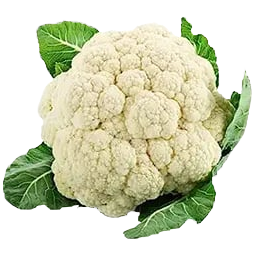- cross-posted to:
- 3dprinting@lemmy.world
- cross-posted to:
- 3dprinting@lemmy.world
I’m printing those little cable pull tabs on our Prusa XL printer. In the models, I added markings to identify the type of cable, printed directly into the tabs with a different color PLA loaded on head #2.
The problem I have, as you can see, is that the white letters are “overrun” by the back surroundings.
I have to print those parts face down: when the first layer is laid down onto the bed, the black surrounding is printed first with head #1, leaving empty space for the symbols, then head #2 comes in and fill in the spaces after the head change:

The problem apparently is that the black material gets “smooshed out” on the bed and partly fills in the void, and then the white PLA doesn’t have enough space to make nice, sharp letters.
It wouldn’t be a big problem with larger letters: they would just look like they have fuzzy edges. But those letters are 3.5mm in height and only two 0.4mm-wide lines at the most, so it’s basically all fuzziness.
It doesn’t happen when I print face up. But then I have to have support for the tabs’ walls, and since I print those things by the hundreds, I’m really not keep on having to remove support on hundreds of tiny parts. So it’s not an option.
I tried printing slower but it doesn’t change much of anything. Not to mention, again, I have to print those things as fast as possible to print as many as possible overnight.
And of course I can’t increase the size of the letters: they’re as big as the tabs’ size will allow.
The letters are readable enough, but they don’t really look great. Is there any trick to reduce or eliminate this? I was thinking of trying to print the white first with head #2, then the black with head #1, but I can’t find an option in Prusa Slicer to invert the order in which the heads are used.
Lower the “first layer multiplier” this adds extrusion width to ensure proper adhesion (and causes elephant’s foot to a lesser extent). This is normally around 110%, go as low as you need, while testing adhesion.
Good tip. I shouldn’t have too much problem with adhesion with the XL, since it’s a coreXY printer. But then, I left 256 parts printing at work on Friday, and this is what the printer cam shows today (I’m at home at the moment):

So yeah, even printers that don’t shake the bed can have adhesion issues.
I never thought shaking the bed would cause adhesion issues 🤔 always thought it was far more the head crashing/clipping or scraping the surface of the part while printing.
Under the “printer” settings tab there is a setting for z height. I’ve found keeping it at 0.04 is the best to prevent the first layer from squishing when printing multiple colors.
I’ll try that, thanks!
@ExtremeDullard small text is notoriously difficult to print. These are face down? I’ve had some success making a slight gap, so the letters aren’t even touching the print bed. So they would be like .1mm inset. Haven’t tried it with dual extrusion though. You might want to have the gap extend into the black as well. Should be easy to do with Inkscape or Affinity designer and boolean using Blender.
A smaller extruder nozzle (.2mm vs standard .4mm) might help as well. Good luck! ✌️small text is notoriously difficult to print
Actually, when printed topside, even 3mm letters are quite decent. They’re only one line thick, but they come out quite nicely considering. They’re not flawless by any stretch of the imagination, but they’re perfectly legible.
When printed face down however, they completely disappear into the black. I had to increase the size to 3.5mm - the maximum before the markings run off the models - to make them legible at all.
Seaech for elephants foot. Or first initial layer expansion (or somethink like that) in settings.
I tried with 0.2 mm elephant foot compensation, as well as no compensation. It doesn’t do anything.
Also, whatever compensation should happen with both heads. This problem is one color bleeding into the other.
Maybe adjust the line thickness/width or whatever its called?
Can you change it only for the 1st layer? Because it’s correct for the rest of the part.
I don’t think so. From my understanding that setting should only change how thick each individual line is though so in total the printer will make more lines
Skip the letter infill and use nail polish :-3
What about wall thickness settings? Is that wider? I think the slicer would consider those walls
Hmmm… This setting looks like it could be the soruce of the issue:

Yeah that’s a really tall first layer. What size nozzle are you using? I have an XL and the default for a .4mm nozzle is .20mm. I’ll sometimes go .24 or .25 but never higher
Those are extrusion widths, looks like they’re using the .2mm height profile
Ahh yup hadn’t had my coffee yet, good catch
raft?
I was thinking you could inset the letter boundaries on the letters first setup, but it looks like you only get 2 walls out of the slicer. Maybe try setting it to not outline the walls at all in letter first mode?
Edit: supposed to be on the followup post
@ExtremeDullard thinner first layer (many profiles default to a thicker first layer), colour sequence too.
Those would be the first things I’d try.
How do you change the color sequence? I couldn’t find anything in the settings.





